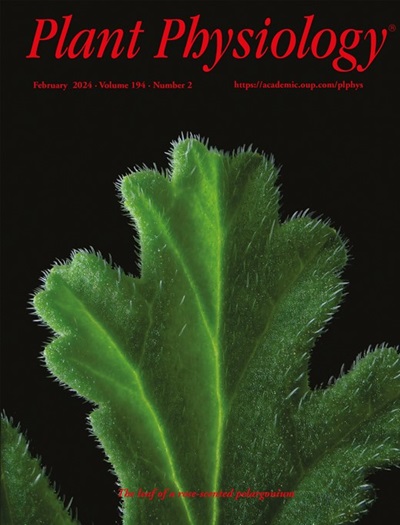100年来德国冬小麦品种根系水力性状的下降。
IF 6.5
1区 生物学
Q1 PLANT SCIENCES
引用次数: 0
摘要
小麦(Triticum aestivum L.)在全球粮食安全中发挥着至关重要的作用,了解其根系性状对改善不同环境条件下小麦的水分吸收至关重要。本研究调查了在1895年至2002年间发布的6个德国冬小麦品种的一个多世纪的育种对根系形态和水力特性的影响。采用田间试验和水培试验,测定根径、根数、分枝密度和全根系水导度。结果表明:根轴数和Krs随释放年份的变化显著下降,而根直径在不同品种间保持稳定。此外,利用全株模型CPlantBox模拟Krs随根系生长的动态功能结构模型,发现老品种的水力导度始终高于现代品种。田间分型与建模相结合的方法提供了对育种引起的根系性状变化的全面观察。这些发现表明,在现代农业的高投入、高密度条件下,育种可能无意中偏爱根系较小、吸水策略更保守的品种。这项研究的结果可能为未来优化小麦根系的育种工作提供信息,帮助培育出能够更好地适应当地不断变化的环境条件的水分吸收策略的品种。本文章由计算机程序翻译,如有差异,请以英文原文为准。
Decreased root hydraulic traits in German winter wheat cultivars over 100 years of breeding.
Wheat (Triticum aestivum L.) plays a vital role in global food security, and understanding its root traits is essential for improving water uptake under varying environmental conditions. This study investigated how over a century of breeding has influenced root morphological and hydraulic properties in six German winter wheat cultivars released between 1895 and 2002. Field and hydroponic experiments were used to measure root diameter, root number, branching density, and whole root system hydraulic conductance (Krs). The results showed a significant decline in root axes number and Krs with release year, while root diameter remained stable across cultivars. Additionally, dynamic functional-structural modeling using the whole-plant model CPlantBox was employed to simulate Krs development with root system growth, revealing that older cultivars consistently had higher hydraulic conductance than modern ones. The combined approach of field phenotyping and modeling provided a comprehensive view of the changes in root traits arising from breeding. These findings suggest that breeding may have unintentionally favored cultivars with smaller root systems and more conservative water uptake strategies under the high-input, high-density conditions of modern agriculture. The results of this study may inform future breeding efforts aimed at optimizing wheat root systems, helping to develop cultivars with water uptake strategies better tailored to locally changing environmental conditions.
求助全文
通过发布文献求助,成功后即可免费获取论文全文。
去求助
来源期刊

Plant Physiology
生物-植物科学
CiteScore
12.20
自引率
5.40%
发文量
535
审稿时长
2.3 months
期刊介绍:
Plant Physiology® is a distinguished and highly respected journal with a rich history dating back to its establishment in 1926. It stands as a leading international publication in the field of plant biology, covering a comprehensive range of topics from the molecular and structural aspects of plant life to systems biology and ecophysiology. Recognized as the most highly cited journal in plant sciences, Plant Physiology® is a testament to its commitment to excellence and the dissemination of groundbreaking research.
As the official publication of the American Society of Plant Biologists, Plant Physiology® upholds rigorous peer-review standards, ensuring that the scientific community receives the highest quality research. The journal releases 12 issues annually, providing a steady stream of new findings and insights to its readership.
 求助内容:
求助内容: 应助结果提醒方式:
应助结果提醒方式:


